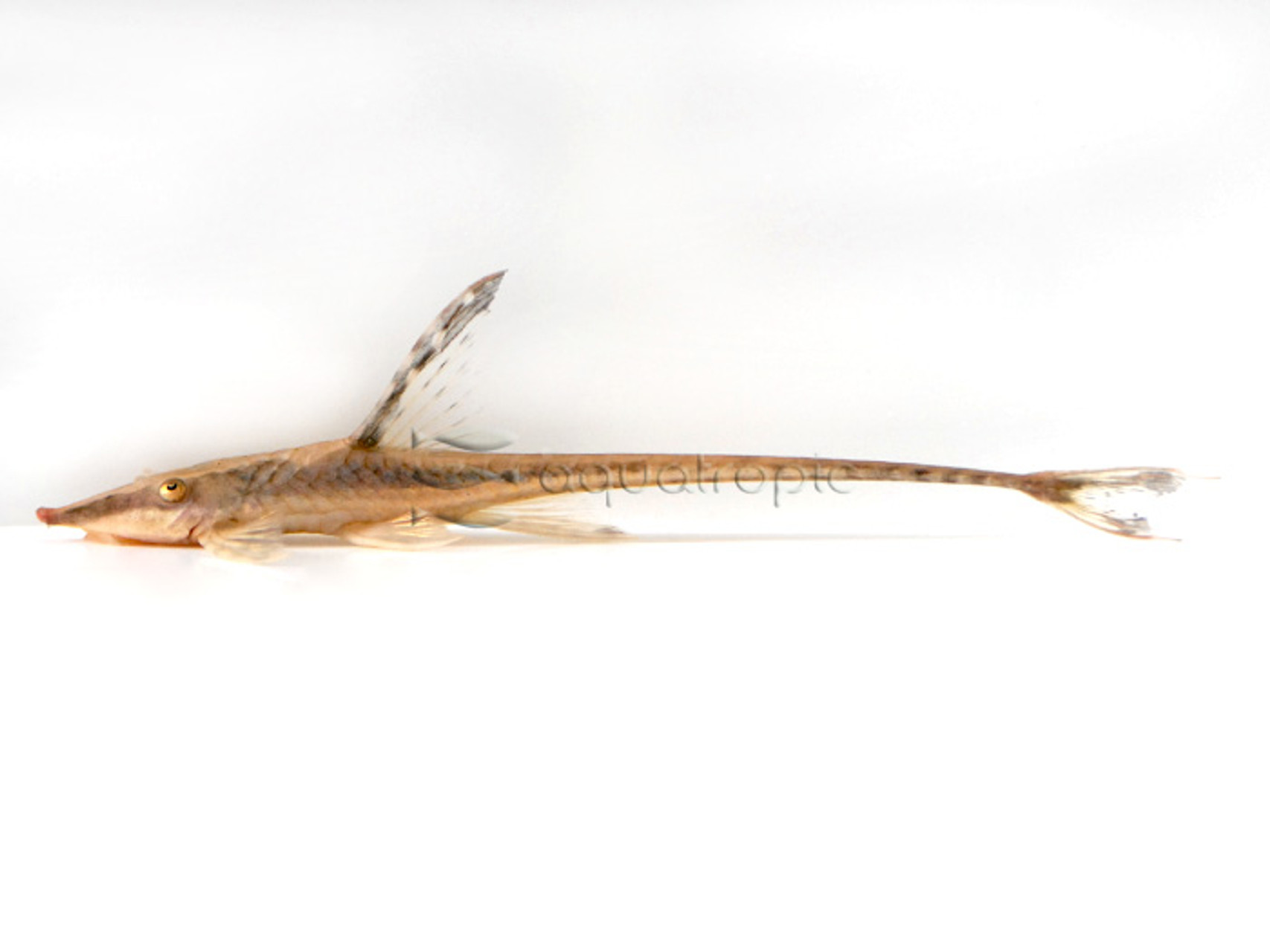Royal Farlowella Catfish (Sturisomatichthys panamense)

The Royal Farlowella Catfish is surely among the most flamboyant of catfishes. The body is sleek and angular, with a tall, stately dorsal fin and long, trailing filaments on the caudal fin. The colors are muted, but dramatic, with a dark band boldly contrasting along the sides and up into the dorsal fin. Fully grown, this impressive fish can reach 10 inches, making for an eye-catching addition to most any community aquarium.
Despite the name, the Royal Farlowella does not actually belong to the twig catfish genus Farlowella. Rather, it is one of the whiptail catfishes, along with the closely related Sturisoma (and not to be confused with the somewhat more distantly related whiptails in Rineloricaria). Up until 2015, there was a considerable amount of taxonomic confusion when it came to these catfishes, but it was eventually determined through genetic study that two lineages exist.
The whiptail catfishes south of the Andes are now classified as Sturisoma, while those to the north, in the rivers of Columbia, Venezuela, and the southern portions of Panama, belong to Sturisomatichthys. There are 9 species, though which of these is the true Royal Farlowella of the aquarium trade is a bit unclear. The name S. panamense is often given to it, but others are quite similar and easily mistaken for it, such as S. aureum. The most remarkable is S. festivum from the Lake Maracaibo basin of Venezuela. That species is sometimes known as the “Real Royal Farlowella” and is recognized by the greatly enlarged tips of the fins, giving an elegant and truly royal appearance.
But the differences between these species are largely inconsequential when it comes to aquarium care. Sturisomatichthys are peaceful and easily kept in groups. Males, in typical loricariid fashion, feed heavily on algae, and benefit from supplemental feeding of algal wafers and vegetables like zucchini. Males bear odontodes on the head and pectoral fins, and these are easily bred in captivity. Eggs are laid on the glass in small clusters and are guarded by the males. Juveniles are challenging to feed and will grow best if moved to a separate tank and fed a high-protein diet.